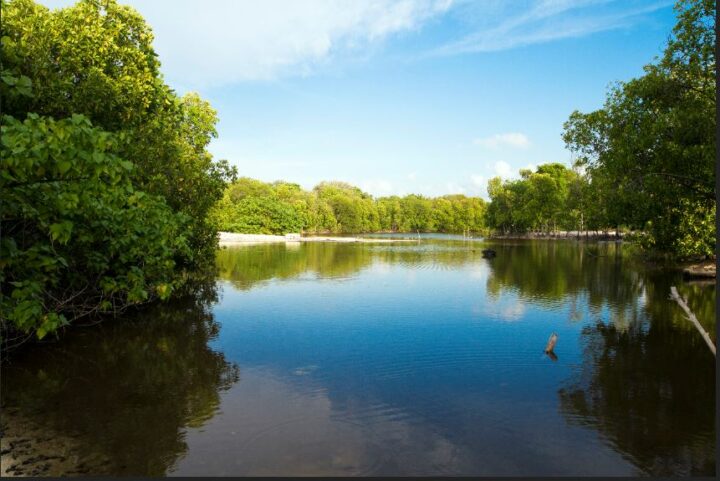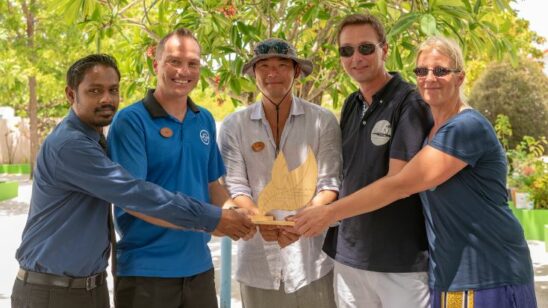
Preserving works of nature with new protected areas
[vc_row][vc_column][vc_column_text]Picture perfect Maldives at its best can be seen by visiting some of the protected areas dotted across the country. Rising steadily throughout the years, the number of protected areas in the Maldives and their beauty has become a source of pride for Maldivians.
The Maldivian government announced in December that it was declaring three more areas of the country as protected areas, bringing the total number of protected areas in the Maldives to a total of 50. These include marine biospheres, dive sites, islands, lagoons, historical sites as well as wetlands and mangroves around the country.
Regarded as one of the most pristine places on earth, the Maldives is under the constant threat of submersion with the rising water levels, and this is not helped by the fact that the country is the lowest lying nation in the world. Even though a small step in the bigger fight against climate change, the decision to protect these areas is a step towards bigger achievements.
The Maldives, well known for its amazing coral reefs and beaches oftentimes neglect the mangrove ecosystems which are under constant threat despite its crucial ecological function to this small island nation. The biodiversity hotspots; Keylakunu Island and its reef and lagoon, and the wetlands and mangroves of Neykurendhoo Island of Haa Dhaalu Atoll, and wetlands and mangroves of Baarah Island of neighbouring Haa Alifu Atoll, come under the Environment Protection and Preservation Act, effectively blocking any activity that damages the environment from being carried out in the area.[/vc_column_text][/vc_column][/vc_row][vc_row][vc_column][vc_images_carousel images=”21668,21669,21670,21675″ img_size=”full” speed=”3000″ autoplay=”yes” hide_pagination_control=”yes” hide_prev_next_buttons=”yes” wrap=”yes”][/vc_column][/vc_row][vc_row][vc_column][vc_column_text]The protected areas in Baarah are home to red mangrove also known as Asiatic mangroves among other vegetation and has Hydrogen Sulphide rich soil. The mangroves and wetlands are home to a variety of phytoplankton, zooplankton and acts as a nursery habitat for juvenile fish. The submerged mangroves’ roots, trunks and branches are also habitats for bacteria, fungi, microalgae and invertebrates. The aerial roots, trunks, leaves and branches host other groups of organisms. A number of crab species also thrives among the roots, trunks and even in the canopy. Insects, reptiles, amphibians, birds and mammals thrive in the habitat as well.
Keylakunu is an uninhabited island located in the centre of Haa Dhaalu Atoll near Neykurendhoo and has an area of 0.2 kilometres. Described as a one-of-a-kind island, the protected wetlands and mangroves of Keylakunu are home to a total of four species of mangrove plants. The wetland area of Keylakunu is located on the south-eastern side of the island. The entire wetland is estimated to cover 9.8% of the whole island. Two separate water bodies can be found within the wetland area. The entire wetland area is covered by mangrove fauna and other living organisms such as fungi, bacteria and insects among others were found to be thriving in the location.
The inhabited island of Neykurendhoo has two water bodies that contain freshwater, and take up 16.7% of the whole island. These wetland areas are expected to grow during the wet season due to heavy rainfall and shrink during the dry season. The entire wetland area is covered by mangrove fauna with four species of mangrove plants to be found. The area is also home to a host of other living organisms such as birds and amphibians as well as fungi and invertebrates as well.
The inclusion of these protected areas brings the total number of protected areas in the Maldives up to 50. The Maldives also has precious dive sites and shipwrecks protected under the law. One of the most famous of these is the recently declared British Loyalty shipwreck in Seenu Atoll, south of the country. Originally a cargo ship made in Newcastle, the U.K., the 140-metre-long vessel lays claim to being one of the only wrecks in the Maldives to be sunk in active battle after being torpedoed by the Japanese at the end of World War II.
Living symbiotically among the coral which grew on the ship are scores of parrotfish, clownfish, wrasse, angelfish, triggerfish and turtles. The protected area is also known to be visited by over 700 species of fish including the rare frogfish, ghost pipefish, leaf fish, and nudibranchs.
The atoll also has its very own manta point, another protected area of the country that is home to masses of huge manta rays. Manta Rays with wingspans of over five metres have been spotted in the area and have made the atoll a world-famous dive site, giving all the more reason to preserve the area.[/vc_column_text][/vc_column][/vc_row][vc_row][vc_column][vc_images_carousel images=”21674,21673,21672,21671″ img_size=”full” speed=”3000″ autoplay=”yes” hide_pagination_control=”yes” hide_prev_next_buttons=”yes” wrap=”yes”][/vc_column][/vc_row][vc_row][vc_column][vc_column_text]
Why do Mangroves and wetlands matter?
Most people might not be aware of it but these overlooked wetlands are home to an incredible array of species and are biodiversity hotspots. They provide nesting and breeding habitat for fish, migratory birds, amphibians, etc. Studies have also shown that mangroves are essential to maintaining water quality. With their dense network of roots and surrounding vegetation, they filter and trap sediments, heavy metals, and other pollutants.
Other than that, mangroves also act as the first line of defence for coastal communities. They stabilise the shorelines by slowing erosion and provide natural barriers to storm surge, flooding, and even cyclones. Mangroves also trap carbon dioxide more effectively than most tropical trees. This means that conserving and restoring mangroves is essential to fighting climate change.
Showing why mangroves and wetlands matter in the fight against climate change, conserving these natural blessings can only be seen as obligatory for a country such as the Maldives. Further progress is still needed, but a small step in the right direction is also an important victory that should not be disregarded.[/vc_column_text][/vc_column][/vc_row][vc_row][vc_column][vc_column_text]Editors note; Images courtesy of Bluepeace Maldives.[/vc_column_text][/vc_column][/vc_row]





